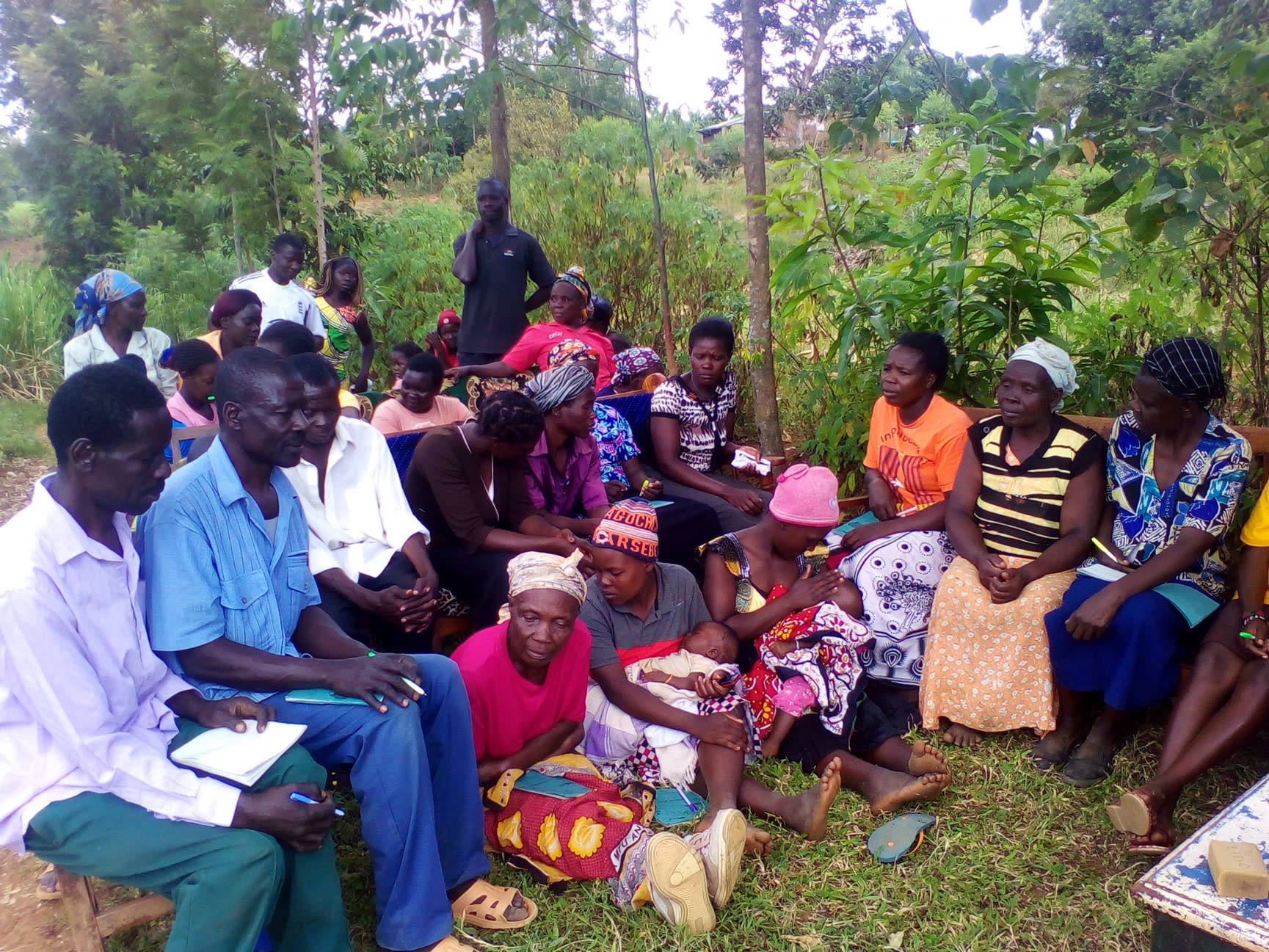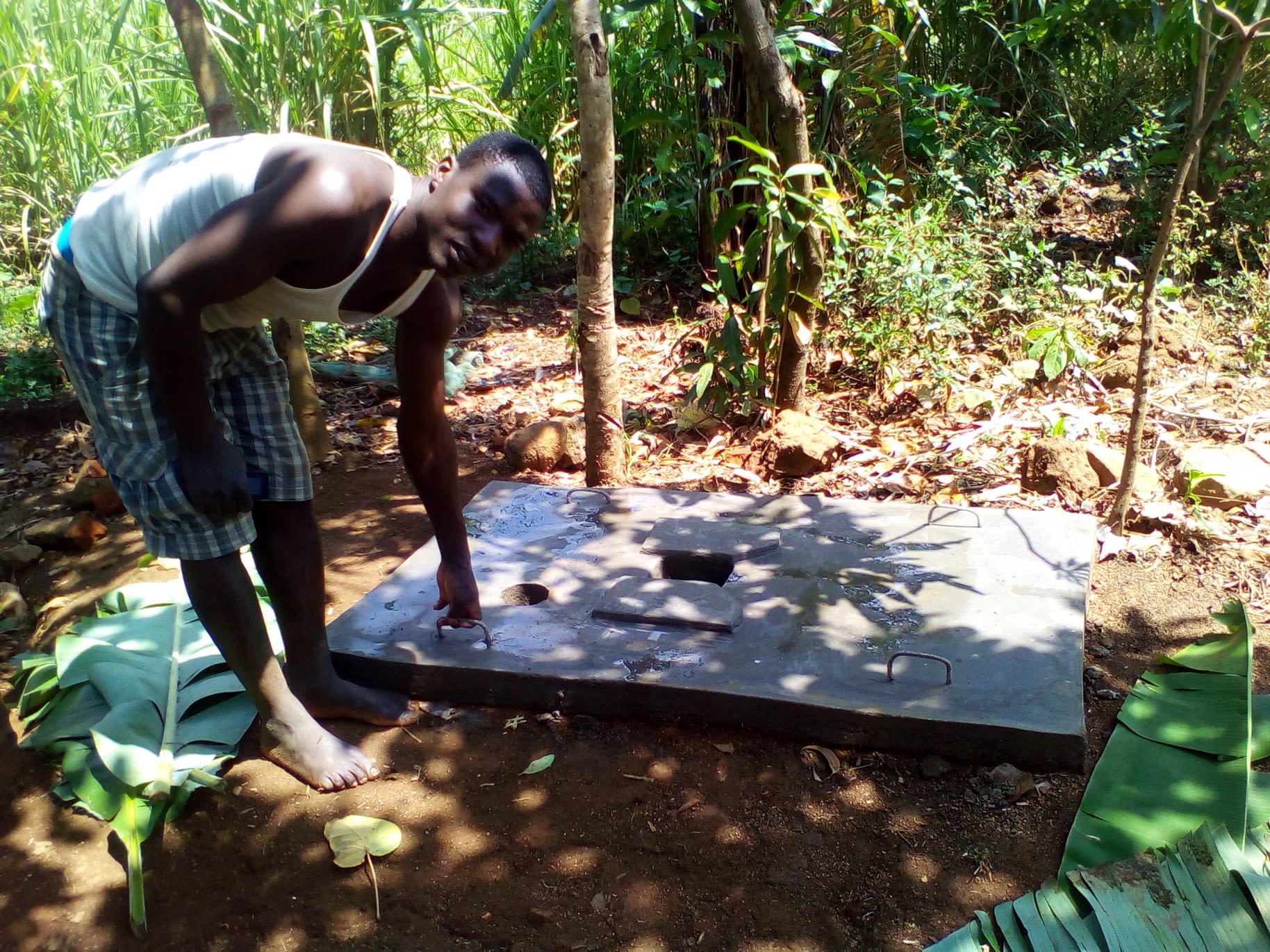A normal day in Mwichina begins at 6am. Parents get their children ready for school so that they can get to the farm before the late day's heat. From our interactions with the members of this village, we realized that a large number of people are primary school dropouts. On asking why, we learned that it was because of scarce resources here. It is difficult for parents to get their children all the way to secondary school. A number of boys drop out of school to engage in the "boda-boda" business (motorbike taxi) as the girls often marry into another family at a young age.
Water Situation
Community members rely on Mwichina Spring to meet all of their water needs - drinking, cooking, and cleaning. A person aims to carry as much water as possible to limit the number of trips made to the spring. Most often, an adult carries a 20-liter jerrycan and a smaller container to bail water. Jerrycans are dunked under the surface and the cup is used to fill the difference.
Mr. Elisha Abuneri reported that "this spring has been existing ever since I was born. My grandparents used it and our children are also using it."
Mwichina Spring is unprotected and open to all forms of contamination, especially during the rainy season. It's even convenient for animals that come to sate their thirst. After drinking this water, community members suffer from waterborne disease. Thomas Nabwayo told us, "Our village has been faced with water-related diseases. Cholera and typhoid have been our visitors, with a few succumbing to it. We are encouraging our members to treat their water before drinking and to put up sanitation facilities in their homes, as it is vital."
Sanitation Situation
Over half of the households in this area have a basic pit latrine made out of thatched mud with timber floors. Many of these are very rickety, putting users at risk of falling through. Most households that don't have a pit latrine share with a neighbor or extended relative, but there is also a chance that open defecation occurs. There are no hand-washing stations set aside for personal hygiene. Community members report that they most often grab some of the water they boiled in the kitchen to rinse their hands.
What we can do:
Training
Community members will attend hygiene and sanitation training for at least two days. This training will ensure participants have the knowledge they need about healthy practices and their importance. The facilitator plans to use PHAST (Participatory Hygiene and Sanitation Transformation), CLTS (Community-Led Total Sanitation), ABCD (Asset-Based Community Development), group discussions, handouts, and demonstrations at the spring. One of the most important topics we plan to cover is the handling, storage, and treatment of water. Having a clean water source will be extremely helpful, but it is useless if water gets contaminated by the time it’s consumed. Handwashing will also be a big topic.
Training will also result in the formation of a committee that will oversee operations and maintenance at the spring. They will enforce proper behavior around the spring and delegate tasks that will help preserve the site, such as building a fence and digging proper drainage. The fence will keep out destructive animals, and the drainage will keep the area’s mosquito population at a minimum.
Community members have already told us that they’re extremely excited for the chance to learn new things.
Sanitation Platforms
On the final day of training, participants will select five families that should benefit from new latrine floors.
Training will also inform the community and selected families on what they need to contribute to make this project a success. They must mobilize locally available materials, such as bricks, clean sand, hardcore, and ballast. The five families chosen for sanitation platforms must prepare by sinking a pit for the sanitation platforms to be placed over. All community members must work together to make sure that accommodations and food are always provided for the work teams.
Spring Protection
Protecting the spring will ensure that the water is safe, adequate and secure. Construction will keep surface runoff and other contaminants out of the water. With the community’s high involvement in the process, there should be a good sense of responsibility and ownership for the new clean water source.
Fetching water is predominantly a female role, done by both women and young girls. Protecting the spring and offering training and support will, therefore, help empower the female members of the community by giving them more time and efforts to engage and invest in income-generating activities.
This project is a part of our shared program with Western Water And Sanitation Forum (WEWASAFO). Our team is pleased to provide the reports for this project (edited for readability) thanks to the hard work of our friends in Kenya.



 Rehabilitation Project
Rehabilitation Project
































